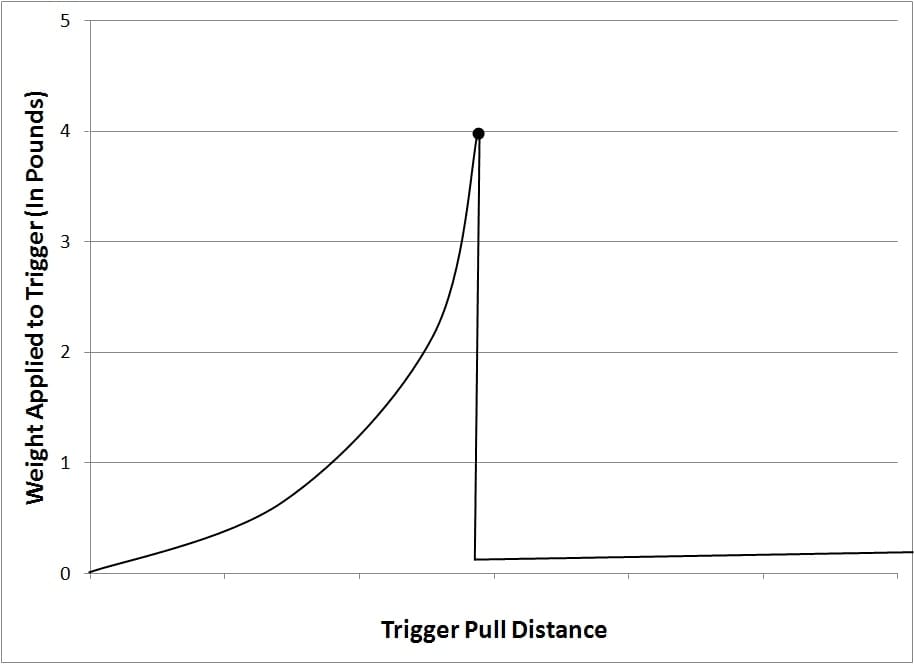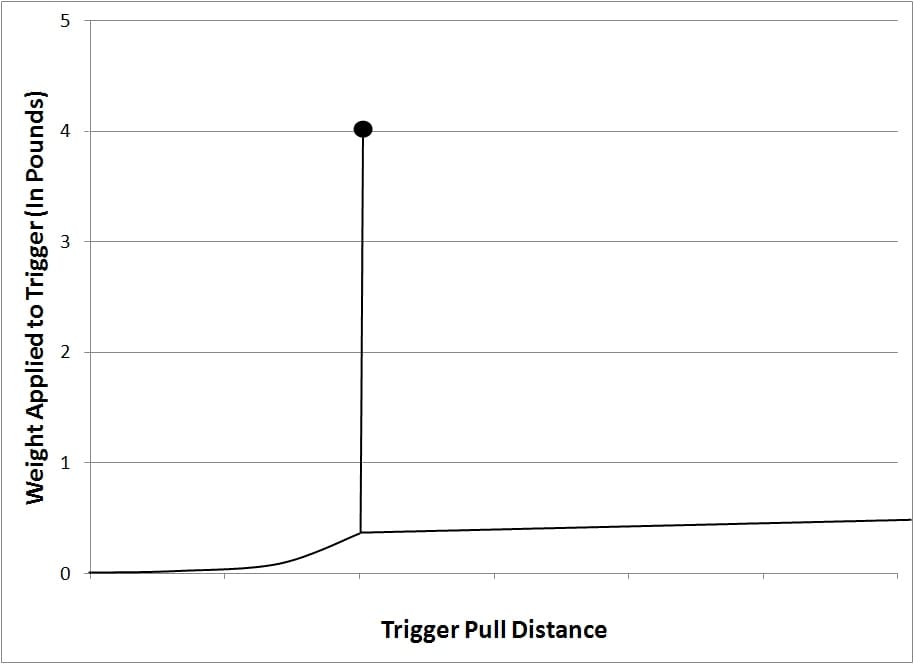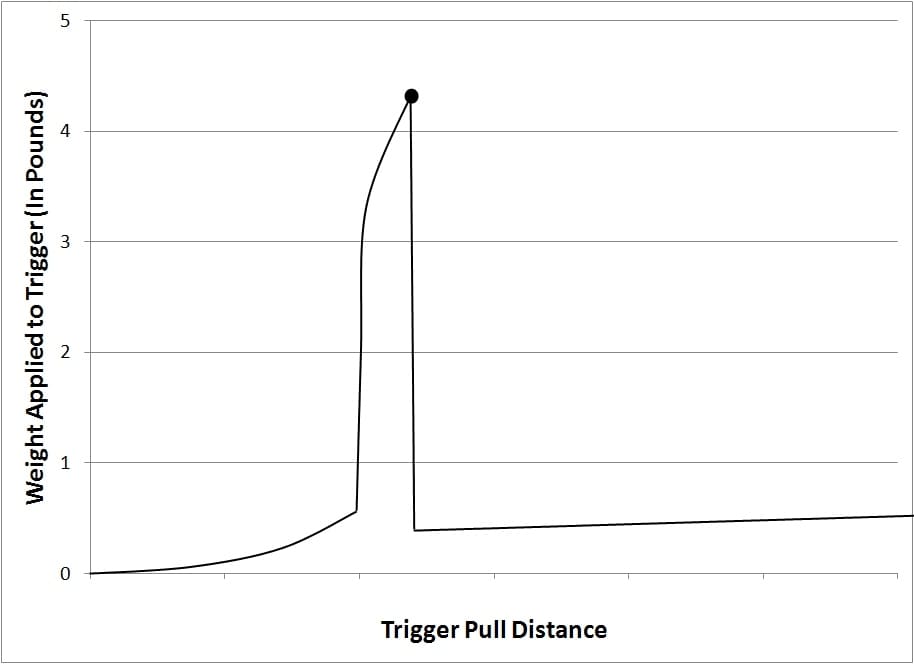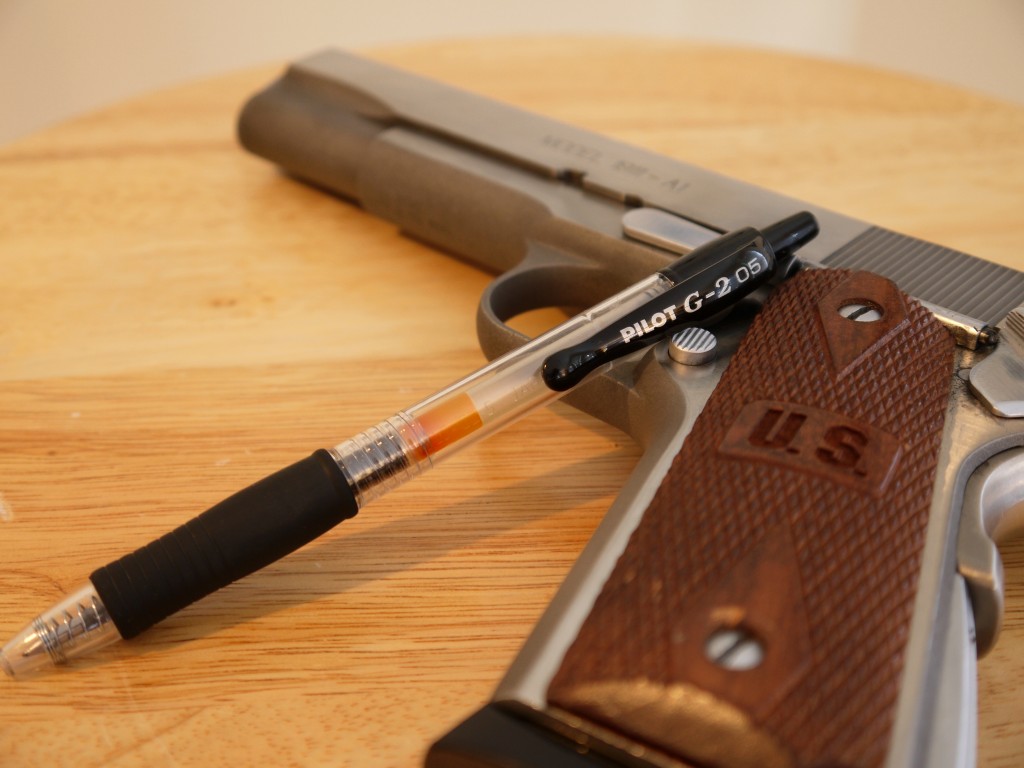Our fearless leader received an email from one of our readers.
“It seems people are always complaining about this trigger or that, or talking up the smooth-as-butter qualities of some high-end revolver they’ve just acquired. I claim almost no idea of what to look for in a trigger, and what idea I can claim comes mostly from reading others wax rhapsodic (or vitriolic) about triggers they’ve known and loved (or didn’t). I’d love to see some relatively clue-ful TTAGer ‘splain it all to me.”
RF has nominated me as our resident relative clue-ful gun guy. And so a series is born, starting with a little beginnner’s trigger talk . . .
Quick disclaimer: this article will detail what I think makes a good trigger. Opinions vary wildly depending on what you’re doing, what you’re shooting, and even personal preference. But the general consensus seems to be that a clean, crisp trigger makes life behind a gun—any gun—just that little bit better.
Before we start talking about how different triggers feel we need a standard frame of reference, which is where the retractable ballpoint pen comes in. Everyone, even people who have never held a gun, have clicked a clicky pen and knows what that feels like. The click of a clicky pen is the worst single stage trigger you can possibly find, and a perfect starting point.
Go on, grab one right now. Click the top a couple of times. You’ll notice that there are four distinct stages to the click: the long push, the click, the post-click downward travel, and the reset back to the top. I’ve always heard these referred to as the “slack,” the “break,” the “overtravel” and the “reset,” but they may have other names as well. We’ll use this vocabulary to talk about triggers.
On rifles, there are two styles of triggers: single stage and two stage.
Single stage triggers are where the trigger presents a single, continuously increasing point of resistance to the shooter’s finger before the “break” releases the trigger. Single stage triggers should have no discernable “slack” before the break.

These graphs will help us visualize what triggers feel like. The horizontal axis represents the distance traveled by the trigger as it moves backwards (from left to right), and the vertical axis represents the force required to move past that point on the trigger. The “break” is visualized by a large black dot.
On a “good” single stage trigger like the one in the graph above, there is no slack before the break (the trigger does not move until enough pressure is applied to move past the break). With a good single stage trigger the shooter simply applies constantly increasing pressure until the trigger breaks and doesn’t have to worry about taking up any slack before the break.

This is what my old DPMS trigger felt like, and what the clicky pen kinda feels like. As you increase pressure on the trigger, the trigger moves backwards. This backwards movement in a single stage trigger is called “creep,” so named because the trigger will usually start and stop moving a couple of times as you apply more pressure, “creeping” backwards to the break rather than in one fluid motion. What makes this kind of trigger difficult to use is that all of the “false starts” with the creeping may encourage the shooter to anticipate the recoil (they think they passed the break when in fact there is more trigger yet to pull).
Two stage triggers are designed to have a certain amount of slack in the beginning of the pull. As the shooter takes up all that slack, the trigger moves backwards for a short distance before hitting stiff resistance. Once the shooter hits this “wall” of resistance the trigger more or less functions like a single stage trigger.

This is what a “good” two stage trigger should feel like. Kinda. My photoshop skills aren’t quite up to snuff, but you get the idea. The trigger moves for a bit with a little pressure, then hits the resistance of the second stage and from here the thing acts as a single stage trigger.
Two stage triggers are more common in precision rifle builds than single stage triggers for two reasons. First, the break in the trigger can be comparatively lighter than a single stage trigger. For example, if it takes two pounds of pressure to get the trigger TO the break, then the break itself can be only two pounds of extra force (for a 4 pound trigger). Less force means less jerking and better shot placement. Second, the shooter knows exactly where the break is and can use the slack to make sure they’re getting the perfect trigger pull every time. I’m sure there are better reasons, but that’s how I use my two stage triggers.

A “bad” two stage trigger will completely negate the reason you bought a two stage trigger in the first place. If the purpose for having a two stage trigger is knowing where the break is, then a “creepy” two stage trigger is not what you want. Creep, as we discussed previously, hides where that break is and makes for some bad habits and bad shots down the road.
On pistols, you either have single action or double action triggers, and they can behave differently depending on the pistol. My SIG, for example, has a single action trigger that feels like a good two stage trigger. My Nagant m1891’s single action trigger, on the other hand, is a single stage trigger.
In either case, double action typically should feel like a heavier two stage trigger, with a very strong “slack” period before hitting that “break.” A double action trigger should require a constantly increasing amount of pressure, followed by a quick “wall” for a second stage, and then a crisp break. I’ve heard revolvers that do this exceptionally well called a “butter” pull, but “silky” or “smooth” is equally applicable. Smooth and consistent is the key.
So what is a “crisp” trigger? A crisp or sharp or clean trigger is one that has as little “creep” as possible. As I said in my Timney trigger review, imagine breaking off the tip of an icicle. There should be no hesitation when it breaks, and no “creep” beforehand.
And that just about exhausts my knowledge of triggers. As always, I welcome criticism, corrections, and additional comments in the, um, comments.
If you have a topic you want to see covered in a future “Ask Foghorn” segment, email [email protected].





My Kimber Supermatch 2 has the best trigger I’ve ever tried, it’s super smooth and I couldn’t ask for anything more.
The only thing I would add is that perhaps 10-25% of the equation is the feel and weight dynamics that vary depending on placement of the trigger finger and the overall “grip-ability” of the gun for the individual (i.e. how well it fits their hand).
If you have a digital trigger pull gauge, you’ll see that you get different readings depending on which part of the trigger the reading is taken…it will be lower the closer you get to the bottom of the trigger….which is also why in some disciplines the rulebooks sometimes specify where on the trigger the measurement must be taken. Miculek (revolver guy) has commented that you have a choice of a finger high on the trigger for a shorter pull length, or lower on the trigger for a longer pull but less force required.
The same principle applies to your fingers. It will be harder to pull a trigger if your finger has to stretch to reach the trigger (think large framed gun with small hands) as opposed to being able to get your trigger finger situated where less leverage is needed.
Nick, what’s your opinion about a single-stage trigger on a EDC piece? FYI, they scare the hell out of me. I view a degree of take-up as very important for safe carry.
Personally, I roll with a 1911. There’s a little slack in the trigger (because it’s a crappy trigger), but not very much. I want a pistol that will fire with as little pressure as safely possible as soon as that safety comes off. But that’s just me.
Triggers come down to personal choice and the application they’re intended for. For me, single stage is the only way to fly.
I think the definition of a “good” trigger is a lot like how the Supreme Court famously described obscenity – I’ll know it when I see (or in this case feel it. A “bad” trigger is a lot easier to describe.
One thing I think is important to keep in mind – the trigger IS the gun. The rest of it doesn’t matter if the trigger is bad…only if the trigger is good does any other factor come into play.
True! Good trigger: The Timney on my 700.
Bad trigger: Factory trigger on my 1906 manufactured SMLE .303 Brit. Man that trigger is creepier than hillary clinton in a bikini.
all it takes is pulling that beautiful smooth as butter trigger once. for me it a Smith and Wesson with a trigger job, once you go trigger job you never go……Ruger?
You might be amazed how much difference a good trigger job, from a talented gunsmith, will make. My .32 NAA Guardian came with a loooong 10lb pull, and a looooonger reset (Iknow. That is impossible, but it certainly seemed longer). Fortunately the gun shop owner knew a ‘smith who loved to work on NAA products. Now I have a very smooth medium length, 5½lb pull with a short reset. I can hit the 25 yard target instead of topping out at 7 yards accurately with this pocket gun.
None of that addresses a roll trigger, which would be considered ‘bad’ by the descriptions you used (chart # 2). Nonetheless, most of the best bullseye shooters in the sport, including 10 time champion Brian Zins, use the roll trigger. Without going into a multi-paragraph explanation, the crisp, “break like a glass rod” trigger tends to make you try to grab a shot as your sights pass the bull, and you use the steadily increasing pressure of a roll trigger to actually stabilize the gun – the pressure becomes part of your grip. A bad roll trigger is creepy, a good one is butter smooth.
It all depends on what your needs are – a roll trigger on a steel plate competition gun probably wouldn’t be my choice, or on an Olympic grade air pistol with no recoil. The upshot is that a ‘good’ trigger lets you manipulate your gun in your desired discipline without changin the sight alignment.
Comments are closed.